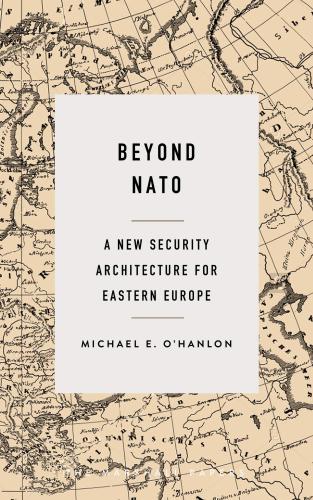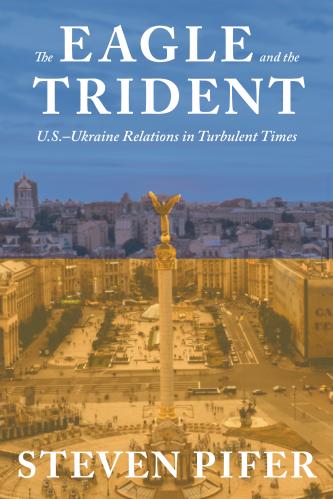For 45 years, the Truman Doctrine and strategy of Containment guided U.S. foreign policy through the Cold War. Americans supported unprecedented international commitments and global presence to counter the threat of communism for decades; yet, when that specter came crumbling down alongside the Berlin Wall in 1989, celebrations were not accompanied by conversation—whither America in this new world?
On July 19, 2017, the Project on International Order and Strategy at Brookings hosted Senator Tim Kaine (D-VA) and Senior Fellow Robert Kagan as part of long-deferred public conversation on U.S. strategic drift in the post-Cold War era and the U.S. role in the world. Following the senator’s remarks outlining a Truman Doctrine for the 21st century, Kaine and Kagan delved into a discussion of U.S. strategy for the challenges of the contemporary world.
Leading with a soft edge
Beginning with the history, Kagan explored the emphasis on American soft power in Kaine’s account of the original Truman Doctrine. While Kagan agreed that U.S. strategy included economic aid and political engagement, there also “was a really hard edge to it.” From the Cold War’s early days, U.S. Secretary of State Dean Acheson “talked as a fundamental principle of foreign policy in that period of creating what he called situations of strength to deal with the Soviet challenge.”
For Kagan, Kaine’s new Truman Doctrine, casting the United States as an “exemplary nation,” risked missing the critical military role of the United States “in both Europe and Asia [after] decades of conflict and a cycle, a sort of unending cycle of conflict…the United States after World War II essentially put a cork in both of those conflicts by becoming, in effect, a European power and an Asian power.” While recognizing the senator had voiced concerns surrounding U.S. activity in the “backyards” of authoritarian powers, Kagan asked how Washington could decrease its involvement when American allies such as the European Union or Japan exist in that same space?
Kaine, agreeing with Kagan’s historical assessment, emphasized the changed landscape from 1947. The gap in power between the United States and other nations has narrowed significantly since the 1940s. Though America “should still be looking at situations of strength…the world is both hyperconnected and power is more diffuse,” necessitating that the United States operate more multilaterally to achieve its objectives. Washington no longer possesses “the ability or certainly the budgetary appetite” to unilaterally create the necessary situations of strength.
Instead, Kaine argued, the United States must reinforce and expand its ties with fellow democracies to “strengthen the abilities of these democracies all over the globe.” This approach, rather than military might, would provide the United States the greatest potential to influence events in authoritarian states; in countries such as Russia and China, their citizens will “seek a compelling model right in their neighborhood where there is more democracy and more freedom…By being exemplary, we’re more likely to influence the internal politics of other nations.” The essence, to Kaine, lies in making “our interaction with these nations more about democracy promotion than…militarily checking off against [an] adversary.”
More than a military threat
For Kagan, this new focus in U.S. foreign policy would be “revolutionary.” The strategy would, in many ways, constitute George F. Kennan’s “containment, rightly understood”—employ military force sufficient enough to contain the authoritarian power “until you convert them” or “until they collapse.” Yet, Kagan noted such an approach would be unlikely to lessen geopolitical competition. Both China and Russia view democracy promotion in neighboring countries as “geopolitical assaults because they are so embedded in what they consider to be their spheres of influence.”
While the United States might place democracy promotion at the fore of its global engagement, the regimes in Beijing and Moscow may well consider this policy as threatening as the use of military force. As Kagan reminded, Washington supported democracy in Ukraine during the Orange Revolution and Maidan movement, but the result was Russian military intervention in an attempt to keep Kiev in Moscow’s sphere of influence. Fundamentally, argued Kagan, what Americans regard as “just doing the right thing” in backing good governance, authoritarian rules “regard as geopolitical aggression.”
Kaine concurred with Kagan’s analysis, recalling that such a rationale has underpinned Russian efforts to stymie reform in Ukraine—lest Russian citizens see a success story “right across the border” that would undercut the legitimacy of the Putin regime. Yet, while democracy promotion would likely be viewed as adversarial, it should not obscure the fact that the Russian government is responding to the package of EU and NATO expansion. A shift in strategy to lead with democratic engagement would be more aware of Russian fears toward NATO enlargement. While it may not decrease across the board, leading with multilateral support for democratic values—minimizing corruption, rewarding political participation—constitutes the best approach to “have the effect we want on authoritarians.”
Rachel Rodgers contributed to this post.







Commentary
The geopolitics of democracy promotion
July 31, 2017